Search Images
Browse Content (p. 722)
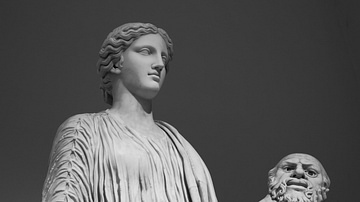
Image
Statue of Persephone, Naples
Roman statue of the goddess Persephone (also known as Proserpina). The restoration of the statue has her holding a theatre mask, like one of the Muses. c. 140-160 CE. (National Archaeological Museum of Naples)
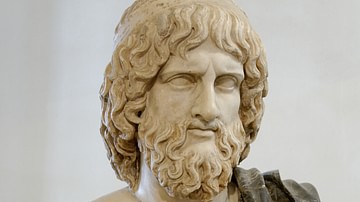
Image
Bust of Pluto, Palazzo Altemps
A Roman bust of Hades/Pluto, based on a 5th Century BCE Greek original. (National Roman Museum, Palazzo Altemps)
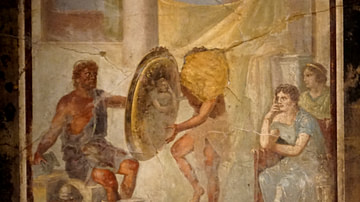
Image
Hephaestus Offers Thetis the Armor of Achilles
A Roman fresco depicting the forge-god Hephaestus presenting Thetis with the armour of her son Achilles, 1st century CE.
National Archaeological Museum of Naples.
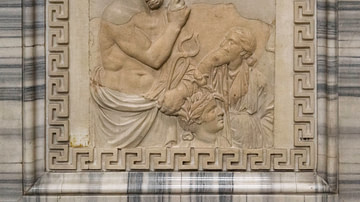
Image
Hephaestus/Vulcan at the Birth of Erichthonius
A Roman bas-relief depicting the Greek god Hephaestus (known as Vulcan to the Romans). The relief is part of a scene in which the goddess Gaia presents Athena with the infant Erichthonius, born from the seed of Hephaestus. Made c. 50 BCE-50...
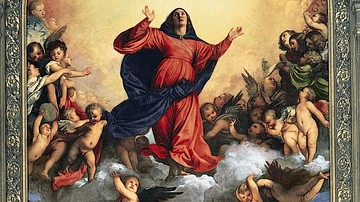
Image
Assumption of the Virgin by Titian
The Assumption of the Virgin altarpiece by the Italian Renaissance artist Titian (c. 1487-1576 CE). Completed 1518 CE for the Church of the Frari in Venice.
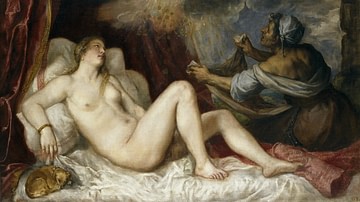
Image
Danae by Titian
Danae, a 1554 CE oil painting by the Italian Renaissance artist Titian (c. 1487-1576 CE). In Greek mythology Danae was seduced by the god Zeus when he appeared as a golden shower. The result of their union was the hero Perseus. (Prado Museum...

Image
Bacchus and Ariadne by Titian
The Bacchus and Ariadne painting created by the Italian Renaissance artist Titian (c. 1487-1576 CE). 1518-1523 CE. (National Gallery, London)
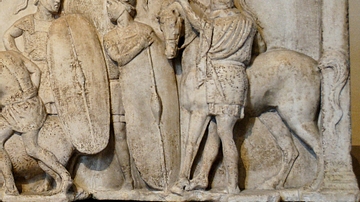
Image
Altar of Domitius Ahenobarbus - Detail
Sacrifice scene during a census: Right part of a plaque from the Altar of Domitius Ahenobarbus known as the “Census frieze”.
Marble, Roman artwork of the late 2nd century BCE.
From the Campo Marzio, Rome.
Louvre
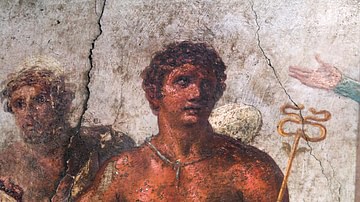
Image
Painting of Mercury, House of the Vettii
Part of a mosaic depicting the god Mercury (Hermes). House of the Vettii, Pompeii. 62-79 CE.
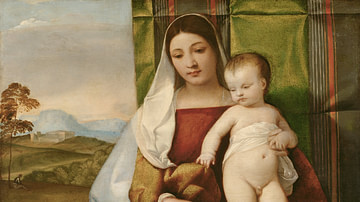
Image
The Gypsy Madonna by Titian
The Gypsy Madonna painting, an early work by the Italian Renaissance artist Titian (c. 1487-1576 CE). c. 1510 CE. (Kunsthistorisches Museum, Vienna)